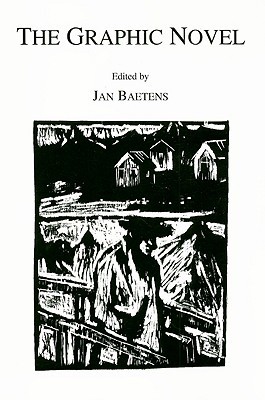
- We will send in 10–14 business days.
- Publisher: Leuven University Press
- Year: 2001
- Pages: 212
- ISBN-10: 9058671097
- ISBN-13: 9789058671097
- Format: 16.3 x 23.6 x 1.1 cm, minkšti viršeliai
- Language: English
- SAVE -10% with code: EXTRA
The Graphic Novel (e-book) (used book) | bookbook.eu
Reviews
Description
The essays collected in this volume were first presented at the international and interdisciplinary conference on the Graphic Novel hosted by the Institute for Cultural Studies (University of Leuven) in 2000.The issues discusses by the conference are twofold. Firstly, that of trauma representation, an issue escaping by definition from any imaginable specific field. Secondly, that of a wide range of topics concerning the concept of "visual narrative," an issue which can only be studied by comparing as many media and practices as possible.The essays of this volume are grouped here in two major parts, their focus depending on either a more general topic or on a very specific graphic author. The first part of the book, "Violence and trauma in the Graphic Novel", opens with a certain number of reflections on the representation of violence in literary and visual graphic novels, and continues with a whole set of close readings of graphic novels by Art Spiegelman (Maus I and II) and Jacques Tardi (whose masterwork "C'?tait la guerre des tranch?es" is still waiting for its complete English translation). The second part of the book presents in the first place a survey of the current graphic novel production, and insists sharply on the great diversity of the range in the various 'continental' traditions (for instance underground 'comix', and feminist comics, high-art graphic novels, critical superheroes-fiction) whose separation is nowadays increasingly difficult to maintain. It continues and ends with a set of theoretical interventions where not only the reciprocal influences of national and international traditions, but also those between genres and media are strongly forwarded, the emphasis being here mainly on problems concerning ways of looking and positions of spectatorship.
EXTRA 10 % discount with code: EXTRA
The promotion ends in 21d.11:31:12
The discount code is valid when purchasing from 10 €. Discounts do not stack.
- Publisher: Leuven University Press
- Year: 2001
- Pages: 212
- ISBN-10: 9058671097
- ISBN-13: 9789058671097
- Format: 16.3 x 23.6 x 1.1 cm, minkšti viršeliai
- Language: English English
The essays collected in this volume were first presented at the international and interdisciplinary conference on the Graphic Novel hosted by the Institute for Cultural Studies (University of Leuven) in 2000.The issues discusses by the conference are twofold. Firstly, that of trauma representation, an issue escaping by definition from any imaginable specific field. Secondly, that of a wide range of topics concerning the concept of "visual narrative," an issue which can only be studied by comparing as many media and practices as possible.The essays of this volume are grouped here in two major parts, their focus depending on either a more general topic or on a very specific graphic author. The first part of the book, "Violence and trauma in the Graphic Novel", opens with a certain number of reflections on the representation of violence in literary and visual graphic novels, and continues with a whole set of close readings of graphic novels by Art Spiegelman (Maus I and II) and Jacques Tardi (whose masterwork "C'?tait la guerre des tranch?es" is still waiting for its complete English translation). The second part of the book presents in the first place a survey of the current graphic novel production, and insists sharply on the great diversity of the range in the various 'continental' traditions (for instance underground 'comix', and feminist comics, high-art graphic novels, critical superheroes-fiction) whose separation is nowadays increasingly difficult to maintain. It continues and ends with a set of theoretical interventions where not only the reciprocal influences of national and international traditions, but also those between genres and media are strongly forwarded, the emphasis being here mainly on problems concerning ways of looking and positions of spectatorship.


Reviews